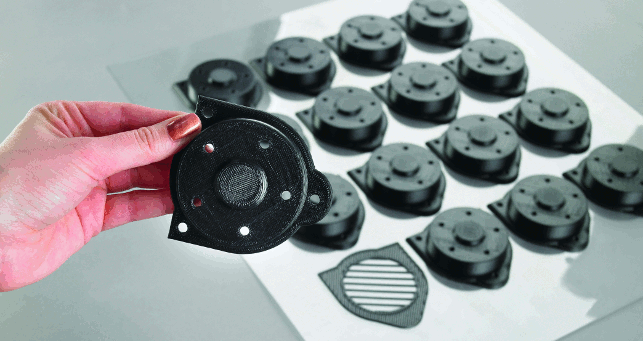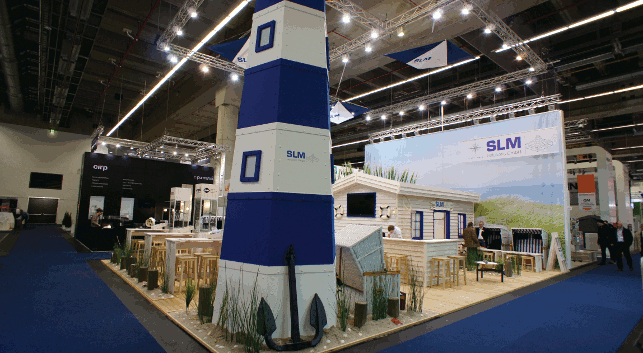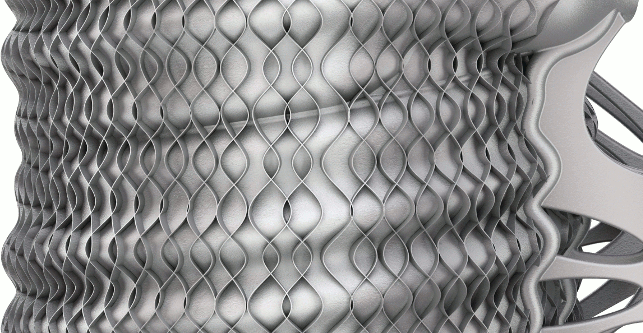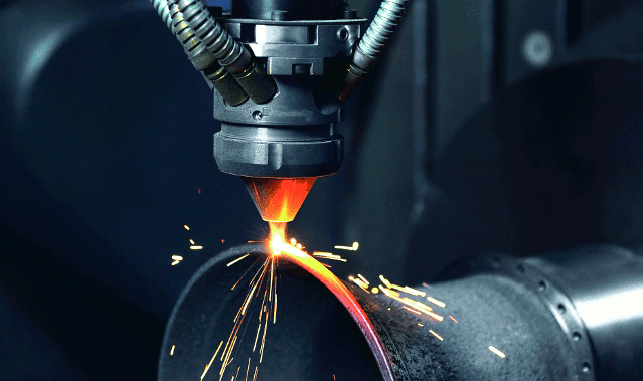For those who have never been to Euromold, let me paint a picture for you. The Frankfurt Messe is a colossal exhibition centre covering 578,000m2.

Stratasys is focussing on 3D printing for industrial applications. For example in making end-use parts
Although Euromold only occupies three of the ten halls, each has an exhibition space of roughly 30,000m2. The scale extends to the stands themselves, some of which measure 200m2 and have two levels.
With over 1,100 exhibitors Euromold draws visitors in excess of 58,000, who travel to Frankfurt from 83 countries. Being such a well attended and established fair, many exhibitors select this event to make major announcements.
The first stop was Stratasys to meet with Tim Heller, VP global channel development, to discuss the company’s future strategy.
According to Heller, although everyone is getting excited about 3D printing in the domestic market, one area Stratasys is focussing on is industrial applications. “Right now, we can see 3D printing for production taking off, and we believe it will fundamentally change manufacturing,” explained Heller.
3D printing for production includes augmented and alternative manufacturing. The former is where 3D printing makes the tools, like jigs and fixtures, whilst the latter is where 3D printing makes the end-use item or part.
Stratasys had a live digital injection moulding factory on its stand using 3D printed moulds. An Objet260 Connex 3D Printer was turning around digital ABS moulds showing how the moulds can withstand the high pressures and temperatures of a micro injection moulding machine.
3D printing’s a beach
Just over the way from Stratasys was SLM Solutions, which has to get the award for the most inventive stand design.
Its 130m2 stand had a beach theme complete with beach house and 9m tall lighthouse. SLM’s big news was the PSA 500 – a new system for automatic powder recovery.

SLM Solution’s beach themed stand with 9m lighthouse
The sieving process runs fully automatically and does not have an influence on the parallel running build process of the SLM system.
I then heard 3D Systems before I actually saw them as it had a band playing in one corner of its huge stand with all band members playing 3D printed musical instruments.
Being the 3D printing giant that it is, 3D Systems launched no less than twelve new products from the very big ProX 500 SLS system to the ProJet 1200 desktop printer.
Many other exhibitors also launched new machines during the show, for instance, EOS presented the EOS M 400 modular metals laser sintering machine and Solidscape unveiled a sneak peek of its forthcoming Contact 600 3D wax printer specifically designed for industrial applications.

A aluminium oil separator printed on the new EOS M 400
According to Solidscape, this printer has potential “disruptive” advantages in streamlining some existing industrial casting processes.
German machine construction company Arburg stood out as offering something a bit different. It boasted that its Freeformer machine uses a completely new patented process for additive manufacturing – Arburg Plastic Freeforming (AKF).
Fully functional components can be produced through a layer-by-layer application using standard plastic granulates without a need for a mould.
Alongside the big boys and established companies I also discovered a few newbies such as Prodways. This French company presented its brand new range of 3D printers.
The Prodways’ technology, developed by André-Luc Allanic, a specialist and pioneer in 3D printing, is based on MOVINGLight technology. The main advantage is that the machines can produce hundreds of tiny parts in just a few hours at a resolution of less than 35 microns.
Also, despite the size of the part – it requires absolutely no finishing when it comes out of the machine.
Hybrid offering
One machine that caught my eye, mostly because there were so many visitors ogling it, was the Lasertec 65 Shape, developed by Sauer Lasertec, a member of the DMG Mori Seiki AG.

The Lasertec 65 Shape offers additive manufacturing and milling in one
The reason for all the attention is that it offers a hybrid solution – additive manufacturing via powder nozzle and traditional 5-axis milling capability.
The company claims that the machine complements and extends the capabilities of additive manufacturing, instead of competing with traditional machining methods such as milling or turning.
Other than machine launches, there were also updates and enhancements to existing technologies and processes.
For instance, Mcor Technologies, manufacturer of fullcolour paper 3D printers, announced that it had cut print time on its IRIS and Matrix lines of 3D printers by 50 per cent, resulting in print times nearly twice as fast as they were previously.
Euromold is worth the visit not just for the scale of it but the quality of what’s on show. But remember to wear comfortable shoes.
Tanya Weaver reports back on the Euromold 2013 event
Default






